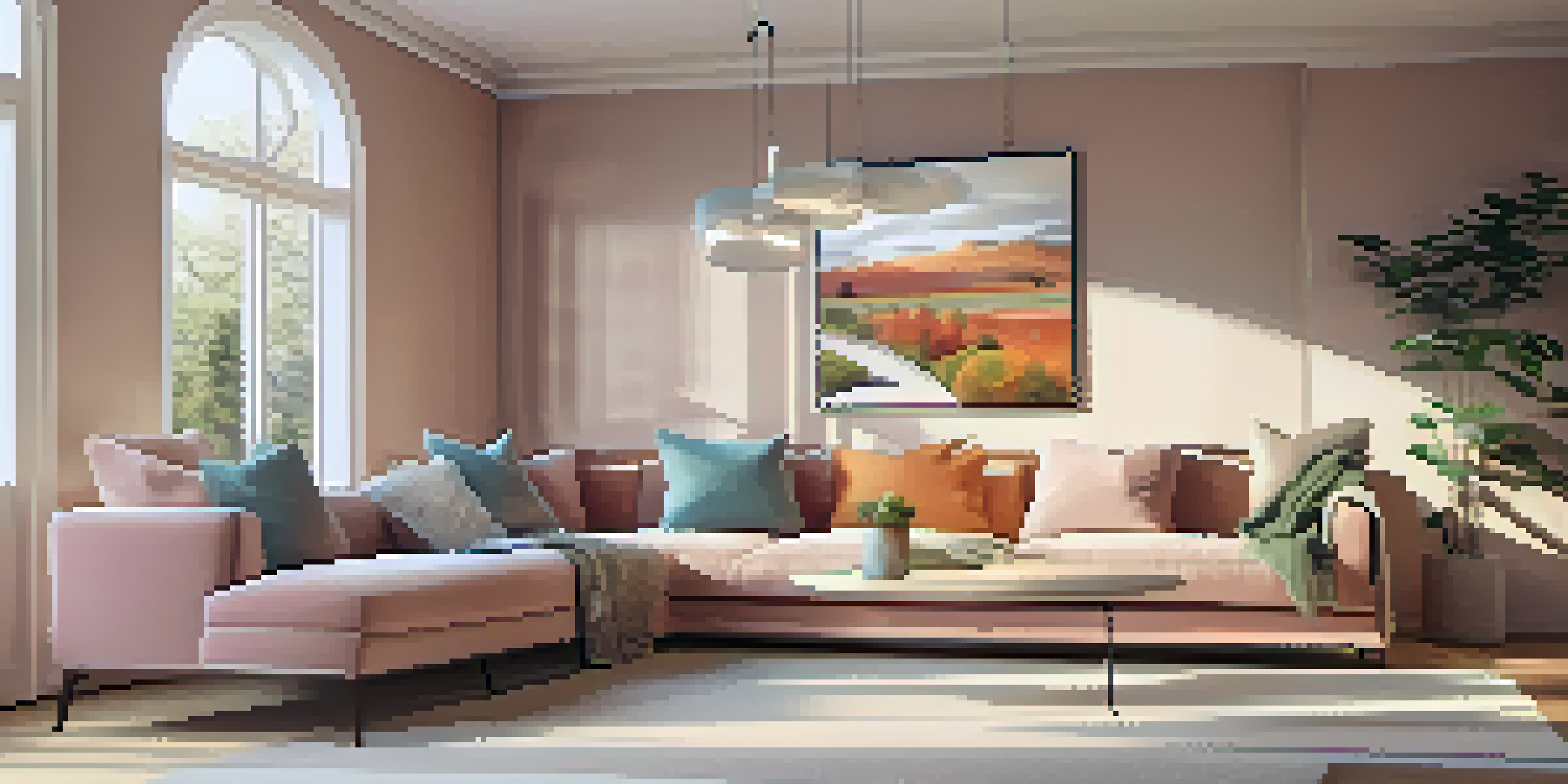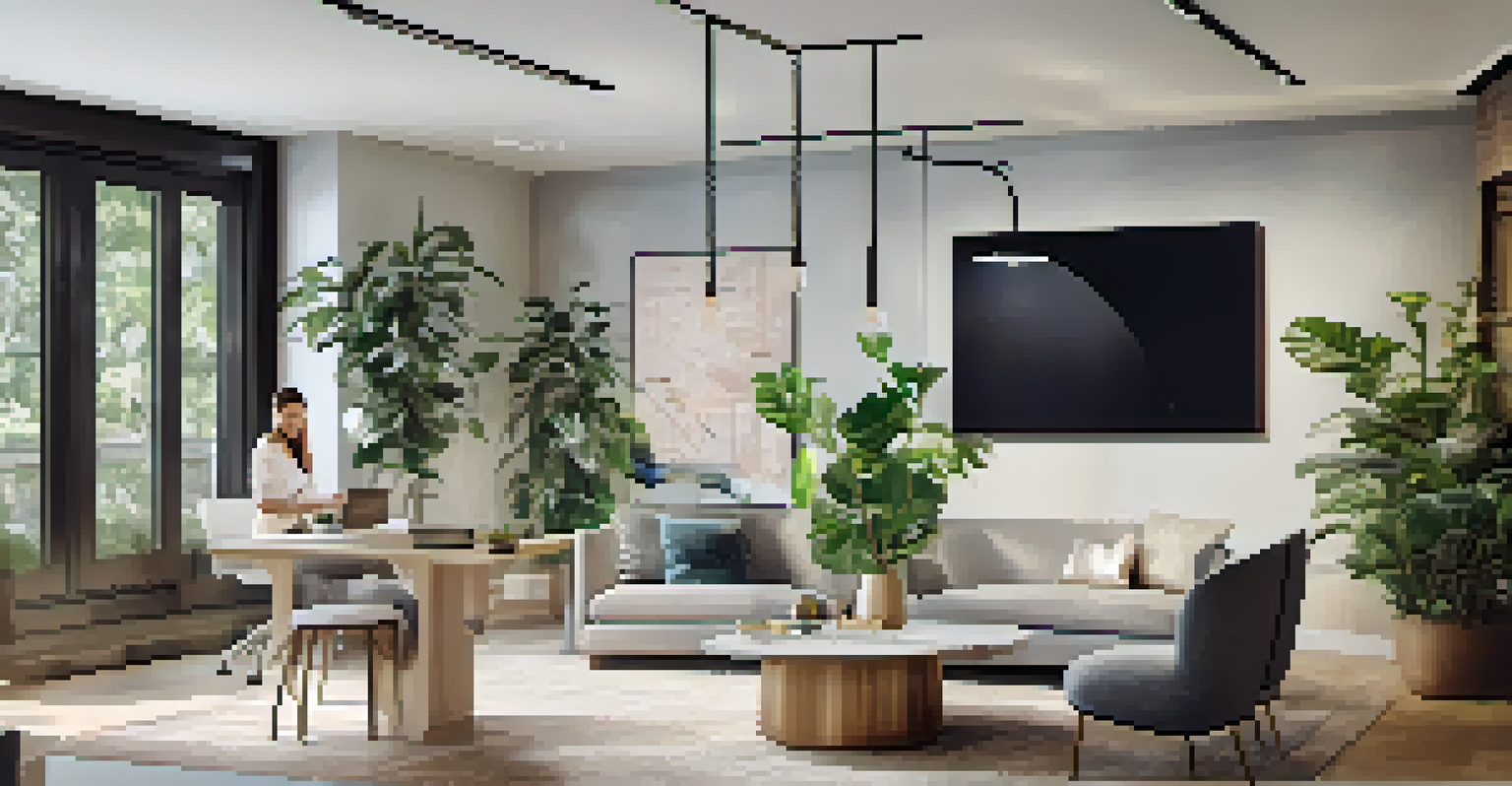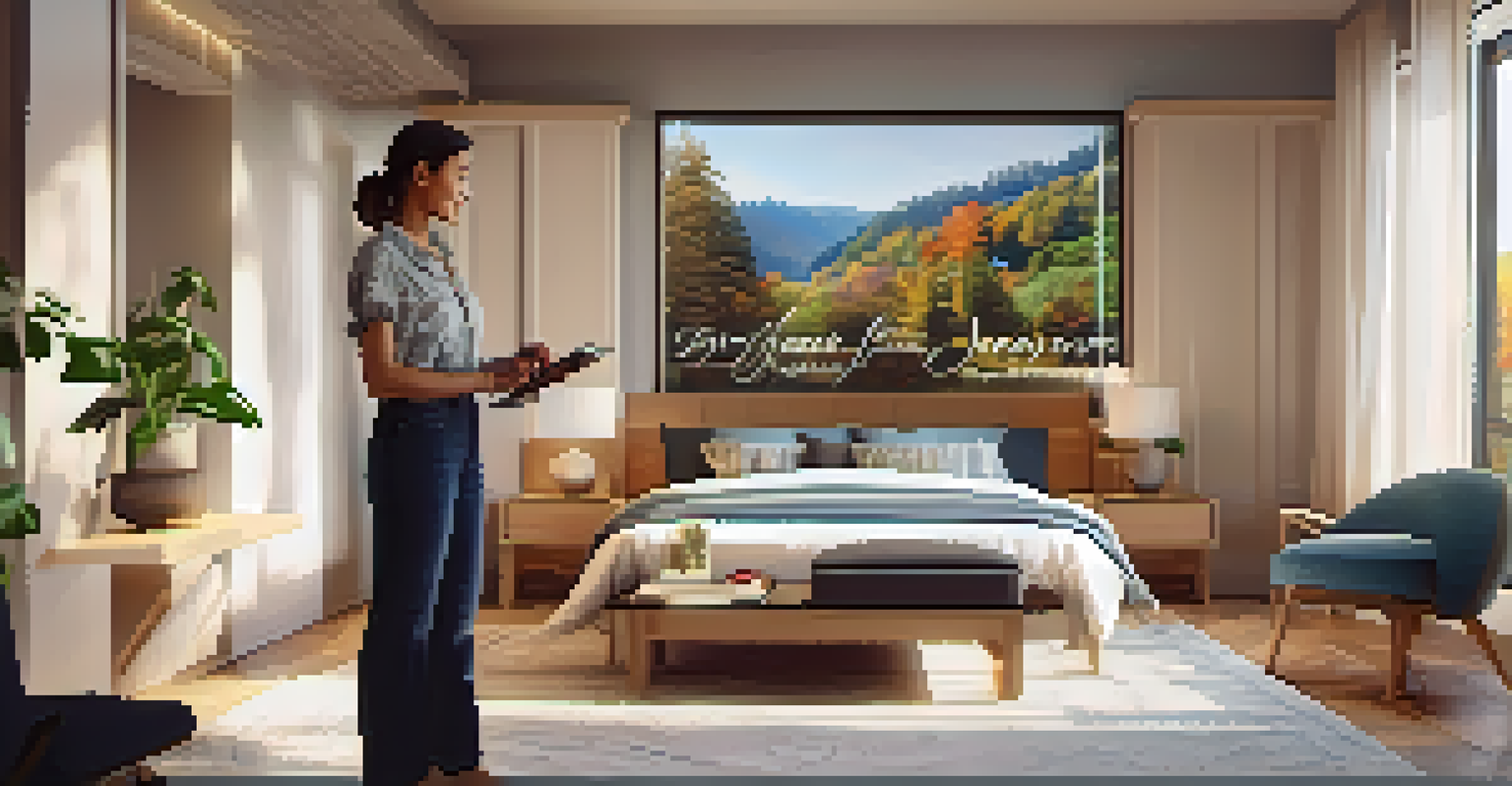The Impact of AR on Interior Design: Visualizing Spaces

Understanding Augmented Reality in Interior Design
Augmented reality (AR) blends digital elements with the real world, enhancing our perception of space. In interior design, this means visualizing how furniture and decor will look in your home before making any purchases. Imagine pointing your phone at an empty room and seeing a virtual couch appear; that's the power of AR!
Augmented reality is not just a tool; it's a way to visualize possibilities and foster collaboration in design.
This technology allows designers and homeowners alike to experiment with colors, textures, and layouts without any physical changes. Instead of relying solely on imagination or 2D sketches, AR brings a three-dimensional perspective that feels realistic. It’s like having a design studio right in your living room!
As AR becomes more accessible through smartphones and tablets, its influence on the interior design world is expected to grow. Homeowners can make informed decisions that lead to more satisfying results, while designers can streamline their processes. This evolution is not just about technology; it’s about enhancing creativity and personalization.
Enhancing Client Experiences with AR Technology
One of the most exciting aspects of AR in interior design is how it transforms client experiences. Imagine walking into a design consultation and instantly seeing proposed changes in real-time. This immediate visualization helps bridge the gap between designer concepts and client preferences.

Clients can take an active role in the design process, making adjustments on the spot. Whether it's swapping out a wall color or rearranging furniture, the power to visualize options fosters collaboration and satisfaction. It’s almost like being a part of a live design show!
AR Enhances Interior Design Visualization
Augmented reality allows homeowners and designers to visualize furniture and decor in real-time, making informed decisions easier.
Additionally, this technology can reduce misunderstandings about design choices. Clients can see exactly what they’ll get, minimizing the risk of disappointment once the project is completed. AR empowers clients, leading to more confident decisions and ultimately, happier homes.
AR Tools and Applications for Designers
Numerous AR tools are available today, helping designers create stunning visualizations. Apps like Houzz and IKEA Place allow users to place virtual furniture in their spaces, making it easier to imagine how everything fits together. These tools are intuitive, often requiring just a few taps to visualize a complete room.
Sustainability is about taking responsibility for the impact of our choices, and AR can help us visualize those choices before we make them.
Moreover, many professional design software platforms are integrating AR capabilities, allowing designers to present their ideas more dynamically. This means no more complicated presentations; instead, designers can guide clients through virtual tours of proposed designs. It’s a game-changer for both parties.
As AR technology continues to evolve, we can expect even more innovative tools to emerge. These advancements will not only enhance the design process but also inspire creativity in ways we can’t yet imagine. The future of interior design is certainly exciting!
Designing for Different Spaces with AR
Different spaces present unique challenges, and AR can help tackle these effectively. For instance, in smaller rooms, designers can use AR to visualize how to maximize space without overcrowding. This can include experimenting with furniture sizes and layouts to find the most functional arrangement.
In larger spaces, AR can assist in defining areas and creating flow. Designers can experiment with different zoning techniques, such as placing rugs or using furniture to delineate spaces. It enables a more cohesive design strategy that feels open yet organized.
AR Improves Client Collaboration
With AR technology, clients can actively participate in the design process, leading to more satisfying results and reduced misunderstandings.
By allowing designers to visualize various configurations quickly, AR not only saves time but also inspires innovative solutions. This adaptability is crucial for creating spaces that are not only aesthetically pleasing but also practical and livable.
Sustainability and AR in Interior Design
Sustainability is a growing concern in the design world, and AR can play a significant role in promoting eco-friendly choices. With AR, designers can visualize sustainable materials and energy-efficient layouts before implementation. This way, clients can see the benefits of choosing greener options.
For example, AR can help showcase how natural light impacts a space, encouraging designs that maximize daylight and reduce energy consumption. It’s not just about aesthetics; it’s about creating healthier, more sustainable environments for everyone.
Additionally, AR can assist in selecting furniture and decor that are sustainably sourced or made from recycled materials. By visualizing these choices in real-time, designers and clients can make informed decisions that positively impact the planet.
The Future of AR in Interior Design
The future of AR in interior design is bright and full of potential. As technology advances, we can expect even more sophisticated applications that will enhance the design experience. Imagine virtual reality showrooms where clients can explore entire homes before making a decision; that’s the next frontier!
Moreover, with the rise of smart homes, AR can integrate seamlessly with home automation systems. Designers could visualize how different smart devices interact within a space, ensuring that functionality is not compromised by aesthetics. It’s an exciting prospect for tech-savvy homeowners.
Sustainability Benefits from AR
AR facilitates the visualization of eco-friendly materials and layouts, empowering clients to make sustainable design choices.
Ultimately, as AR becomes more ingrained in the design process, it will foster a deeper connection between designers and clients. This evolution will lead to more personalized designs, creating spaces that truly reflect individual styles and needs.
Real-Life Success Stories of AR in Interior Design
Several interior designers have already embraced AR to create stunning spaces and delightful client experiences. For instance, a well-known designer used AR to help a couple visualize their dream kitchen remodel. By allowing them to see the new layout in real time, they were able to make confident decisions that resulted in a beautiful and functional space.
Another example involves a retail store using AR to showcase various furniture arrangements. Shoppers could use their smartphones to see how different pieces would look in their homes, leading to increased sales and happier customers. This approach not only enhances the shopping experience but also builds brand loyalty.

These success stories highlight the tangible benefits of incorporating AR into interior design practices. As more designers share their experiences, it's clear that AR is not just a trend; it's a transformative tool that's here to stay.